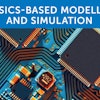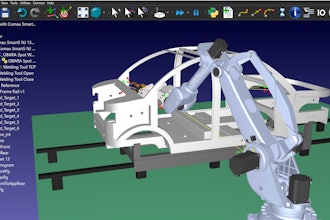For any C-level executive tasked with identifying the appropriate time for an enterprise software selection project, the challenge is a double-edged sword. Make the right decision and you’ll garner praise from management and respect from your peers, and end up with a more efficient and profitable company as the result. Make the wrong choice, and you’ve made an expensive, gut-wrenching, possibly career-wrecking misstep.
Achieving a successful implementation of an ERP system or any enterprise software solution is never a foregone conclusion. With the many vendor solutions on the market today — all claiming to have the right answer to your company’s unique challenges — it’s easy to go down the wrong path. The unfortunate outcome of a failed implementation may not be apparent until you have sunk a great deal of time, energy and company resources into the project.
The ideal scenario when tackling an enterprise software implementation is to start with objective research that isn’t influenced by vendor compensation or existing relationships. Companies enlisting third-party organizations to help identify the appropriate technology solution must be ensured of receiving unbiased advice.
Education: The Backbone of Any Selection Project
While clients hire us for our enterprise software expertise, it’s important for us to relay our deep-seated ERP knowledge. Once we have concluded current state mapping, we engage in numerous education sessions before defining the desired future state.
The main purpose of the education phase is to let clients know what they can achieve with a new enterprise software solution. To realize this, we create a business process education curriculum, host corresponding visioning workshops, including live demos and recorded webinars, to educate process owners on the best practices for their specific industry.
Once the education phase is complete, we shift the focus of the engagement onto defining the future state, an elemental but often overlooked step in the research phase. Questions we ask at this point include, “What does success look like?”, “How is it different from the current state of your company’s technology landscape?”
A logical, step-by-step selection process helps ensure your company’s decision-makers can proceed with confidence in knowing the software solution is thoroughly vetted, appropriate for your company’s business model and capable of providing the results you have predicted for your future state.
6 Areas of Focus for Your Selection Process
After analyzing the current state of your company’s technology landscape, moving through the necessary education steps, and defining the future state, there are six areas of focus for starting the selection process by evaluating potential solutions.
No. 1. Features and functionality assessment
Each software vendor must be evaluated using the same lens and asked the same questions: Does their software meet your company’s current and future business needs? Is the solution intuitive, and will it yield an easy transition for users?
No. 2. Vendor synergy
Is the potential vendor familiar with your industry? Do they have existing customers in your market segment? Do they have a demonstrable track record with referenceable clients? Can you see yourself having a positive personal relationship with the resources the vendor will provide, in addition to professional?
No. 3. Solution agility and viability
Strong candidates will have an investment in the product solution. It’s important to ascertain that the company is stable and not an acquisition target. Does the solution demonstrate the ability to not only meet current needs, but also future requirements?
No. 4. Technology alignment
Does the solution fit within your technology roadmap? Does it reflect industry standards? What is the plan for support and administration services? Is the best choice a hosted, cloud-based, on-premise, or hybrid solution?
No. 5. Total cost of ownership
Total Cost of Ownership (TCO) is a critical component of any software selection. Companies must be able to forecast the investment with certainty and avoid expensive surprises. A thorough understanding of variables during contract negotiations is necessary to accurately compare the TCO of each option. Cost components include:
- Software licensing costs
- Implementation services
- Annual maintenance
- Subscriptions
- Upgrade costs, including services and support
No. 6. Implementation confidence
The final stage in the selection process is assessing your degree of confidence in the solution and the vendor’s ability to deliver the promised results. Ask the vendors the hard questions: “Does your methodology align with our company’s technology approach?”, “Is your project plan detailed enough to address any of our concerns?”, “Do you have a proven track record of providing on-time and on-budget implementations?”
Final Steps: Making the Decision
It’s easy to be swayed by the traditional checklists provided by many vendors, but the truth is, they don’t help identify the best solution for your organization. What is important is an understanding of how the software performs within your process activities, and how that compares with other competing solutions.
After you have identified the most suitable candidate, the work has only just begun. Contract negotiations are complex, and, when properly done, make certain your company is protected.
The final step before the actual deployment process is drafting the business process transformation roadmap. This roadmap should contain a timeline with milestones to effectively lead your organization to the desired future state in a systematic fashion.
When your company’s enterprise software selection process adheres to the steps outlined above, you can be assured your project was based on the objective evaluation of solid, unbiased criteria and hard facts. A process that adheres to these guidelines will guarantee a successful implementation. Knowing your judgment is sound and that you’re leading your organization down the correct path to the desired future state is the best recipe for success for any executive.
Jeff Carr is the founder, president and CEO of Ultra Consultants.























